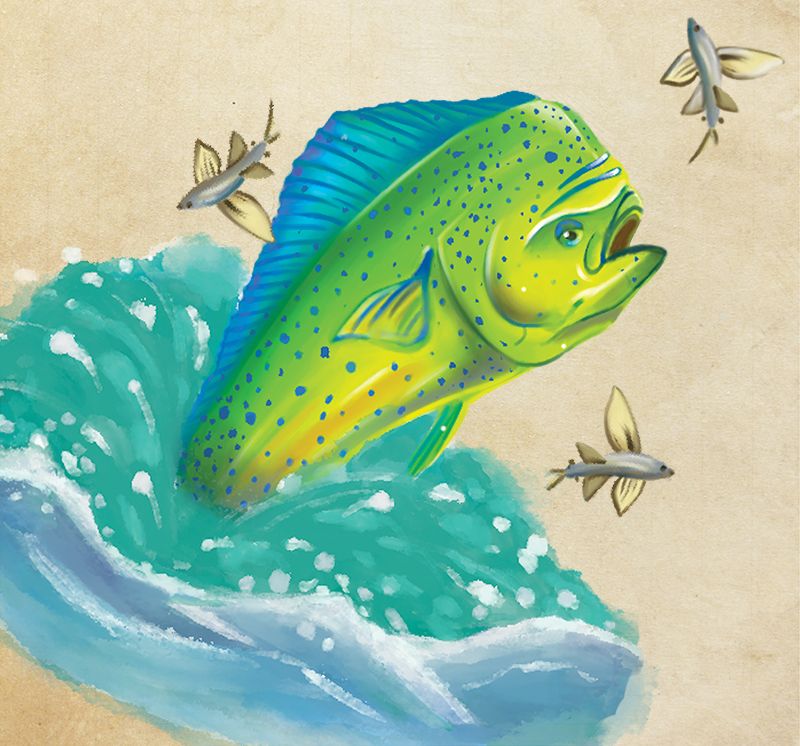And how not to get it confused with dolphin

While the use of the word “dolphin” can be confusing (the name comes from its previous classification in the genus Dolfyn), there is a big difference between the two creatures. Dolphin are mammals, while mahi-mahi are popular offshore game fish—one of the most delicious swimming in the sea.
FLYING COLORS Perhaps no other fish in Lowcountry waters matches the mahi-mahi for its color and brilliance, with its dazzling bright blues, neon greens, deep reds, and yellows. A gold color on their sides lends them their Spanish name, “dorado,” meaning “golden.”
HEADS & TAILS One prominent characteristic is the long aqua-blue dorsal fin that extends from the head almost to the tail. Mature males, which can weigh up to 30 pounds, also have a blunt, extremely large, square forehead, hence the nickname “bull dolphin.”
SARGASSUM SEEKERS Mahi-mahi are attracted to clumps of brown algae called Sargassum, which provide a natural hiding place from predators and offer a floating cafeteria of smaller fish, crabs, squid, shrimp, and zooplankton. Sadly, man-made garbage often gets entangled and is consumed in this oceanic debris field.
FAST & FLASHY The name ”mahi-mahi” means ”very strong.” One reason for its popularity as a sport fish is its dynamic speed (almost 60 mph) and the superb acrobatics it displays when hooked. Protected from overfishing with size and catch limits established by the South Atlantic Fisheries, a keeper must be at least 20 inches long in fork length (the measurement from the tip of the jaw to the fork in the tail), with each angler restricted to a 10 fish per day bag limit and 60 dolphinfish per boat.
SUSTAINING MEMBERS While both a popular game fish and natural prey to larger species such as billfish and sharks, the mahi-mahi population is stable and its conservation status is categorized as of ”least concern.” The main threat is declining habitat quality. Otherwise, dolphinfish are one of the most sustainable fish species in our waters.
FRESH fish Spawning in Carolina offshore waters occurs year-round, peaking in June and July. Females may spawn several times during the year, each time laying a whopping 80,000 to one million eggs. While mahi-mahi are one of the fastest growing fish in the sea, they only live about five years.